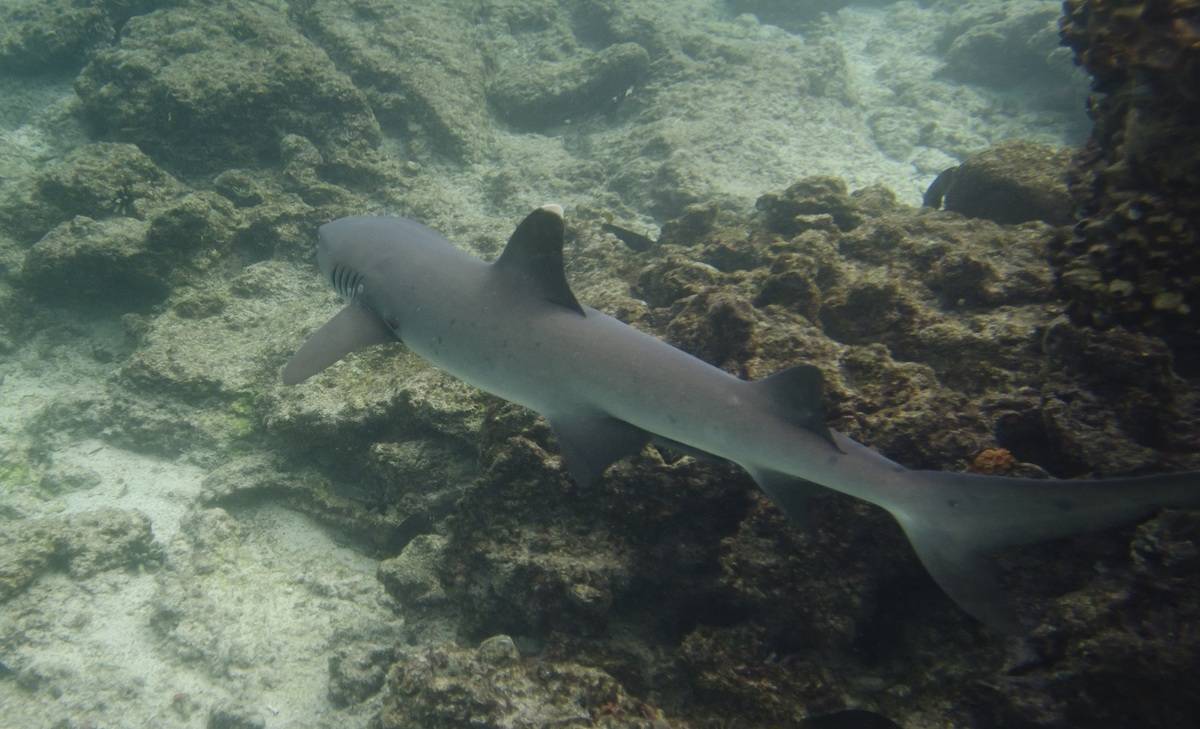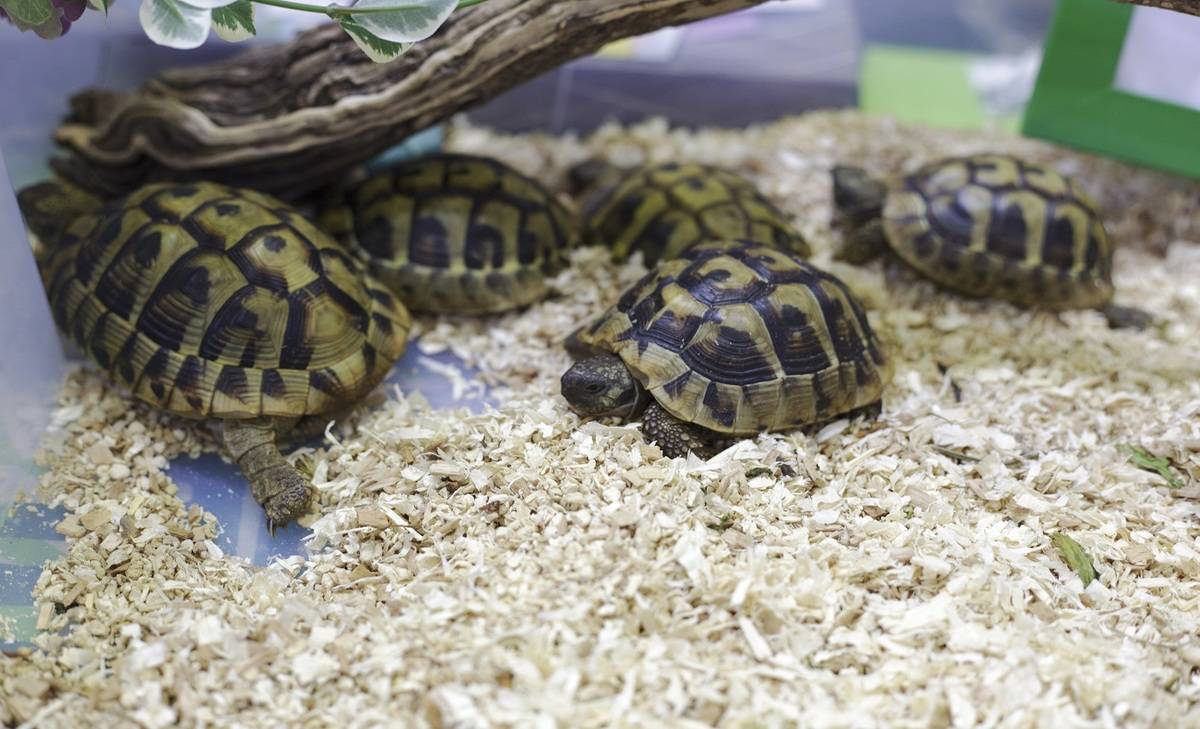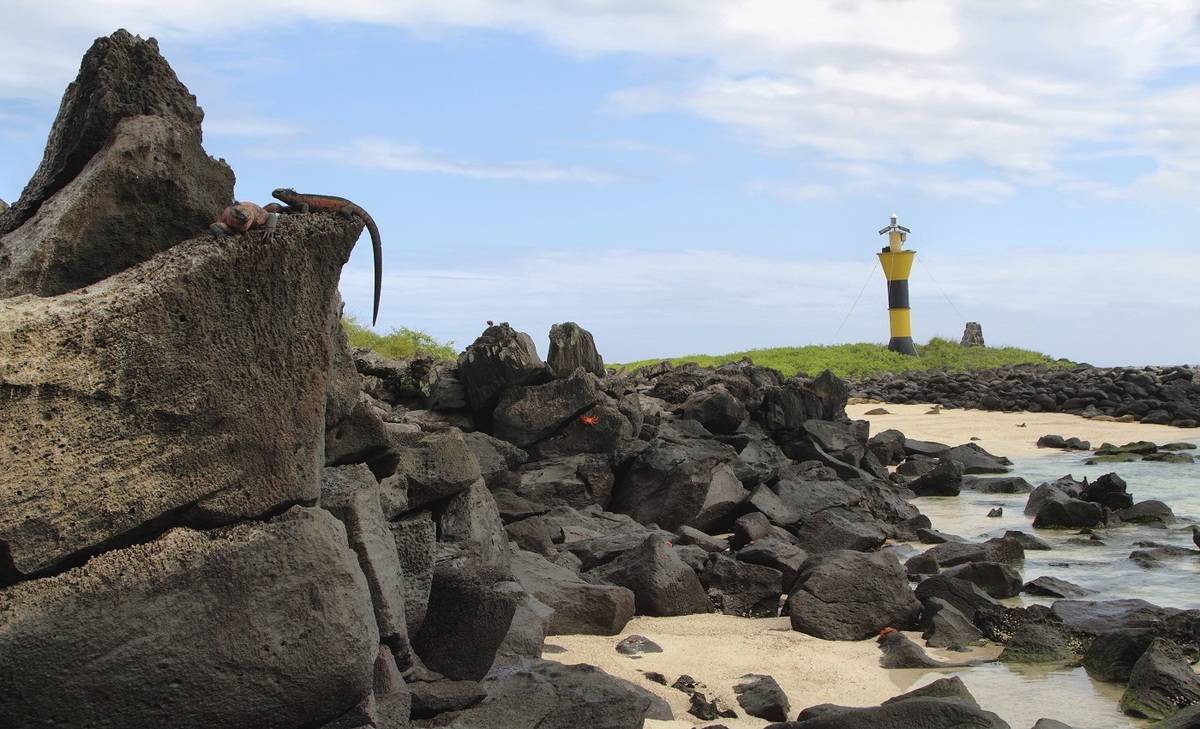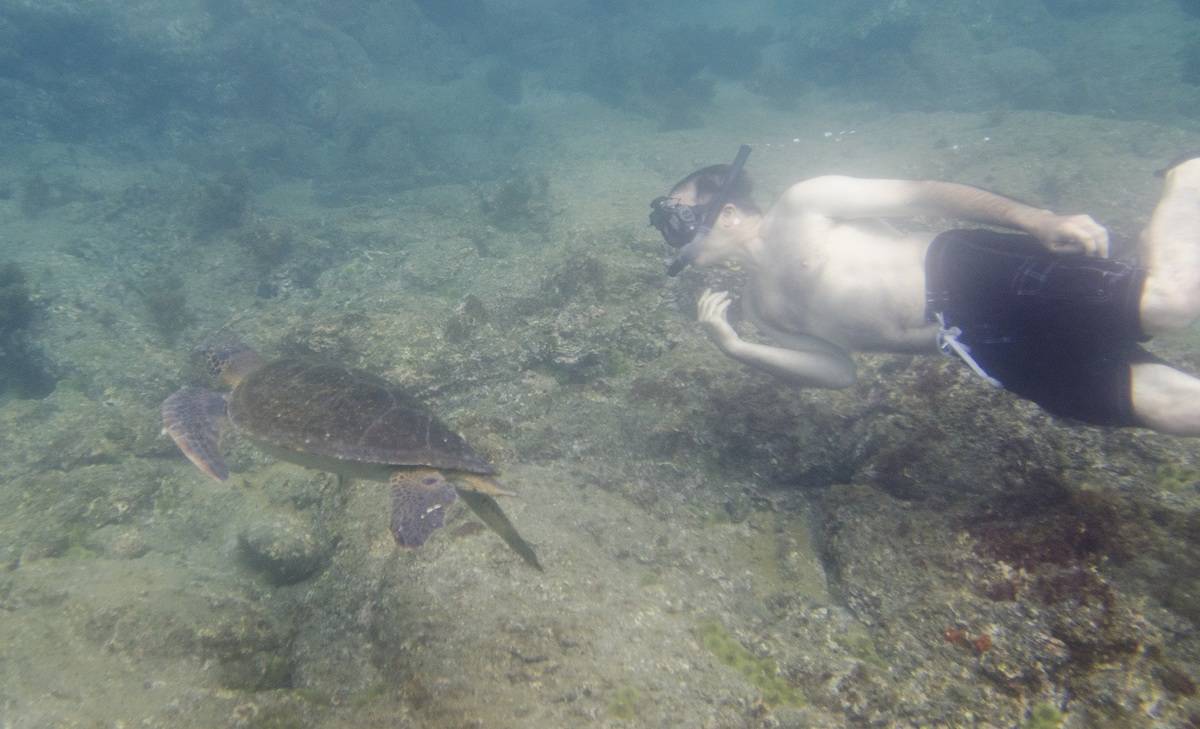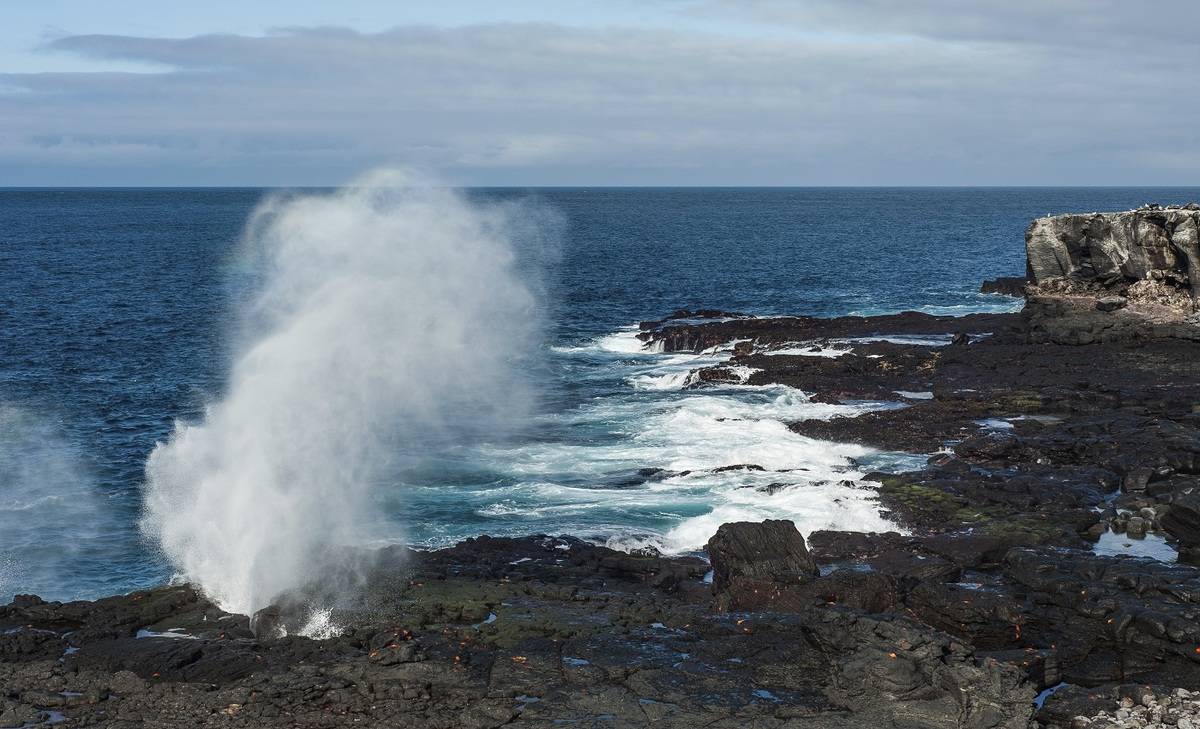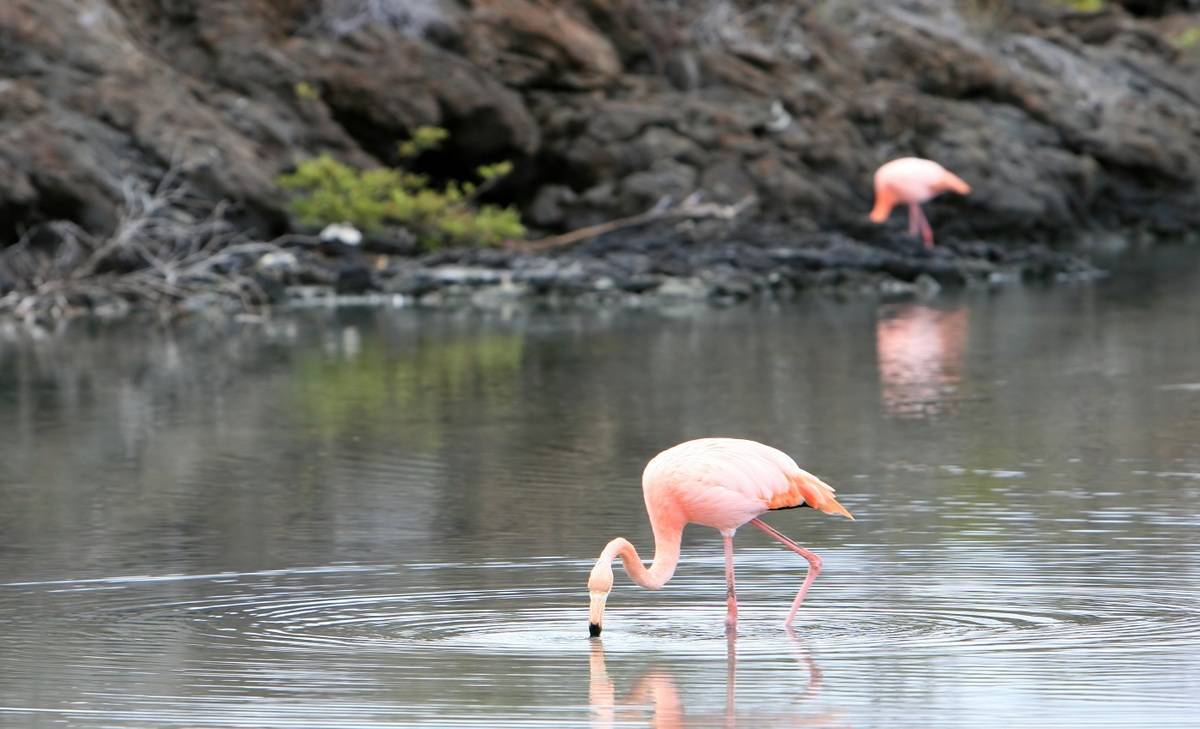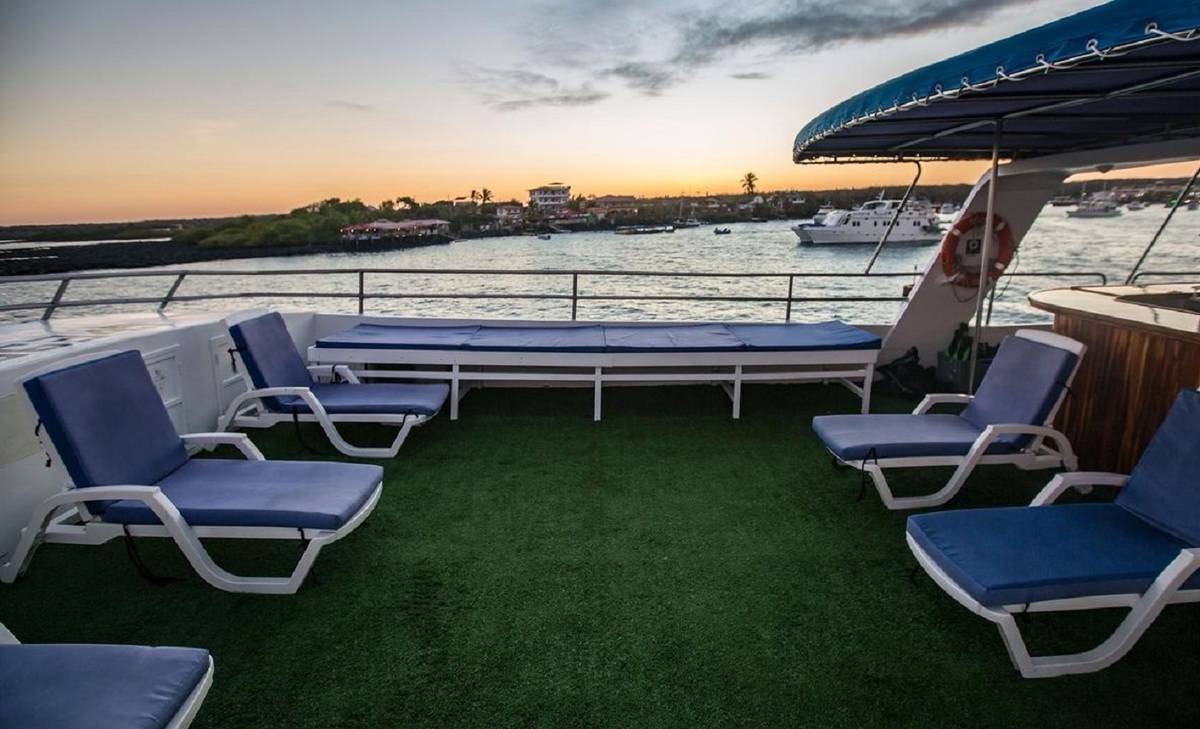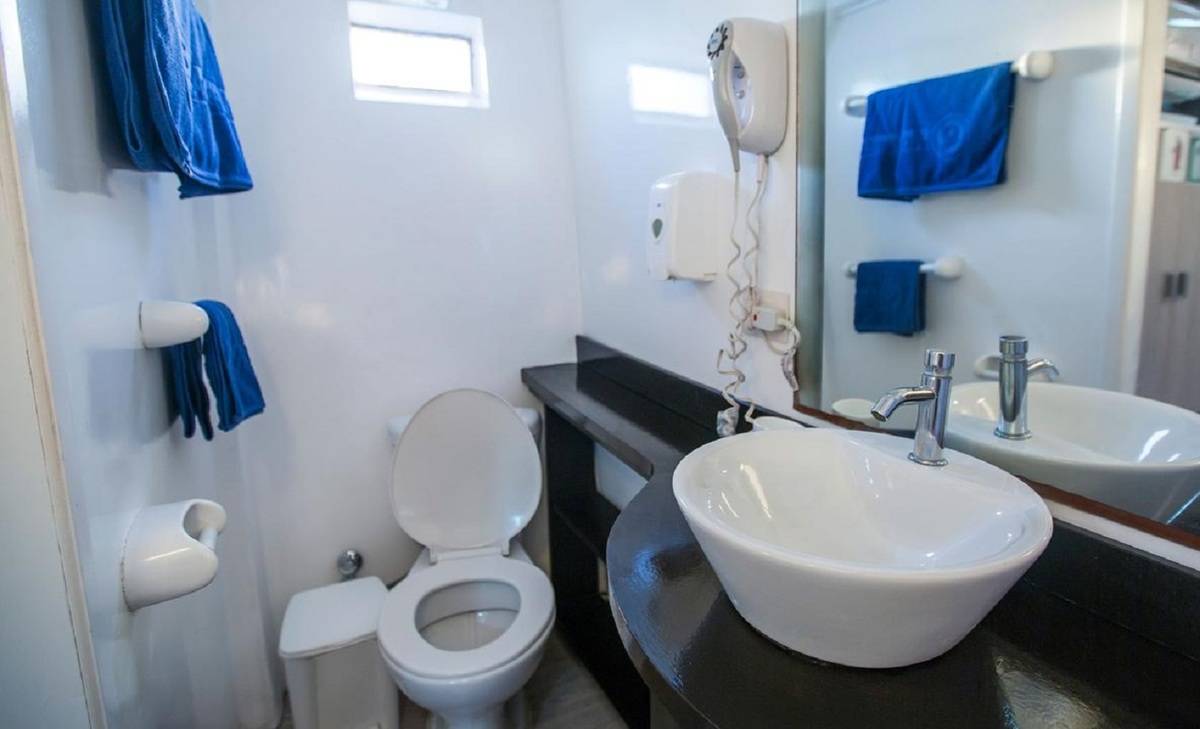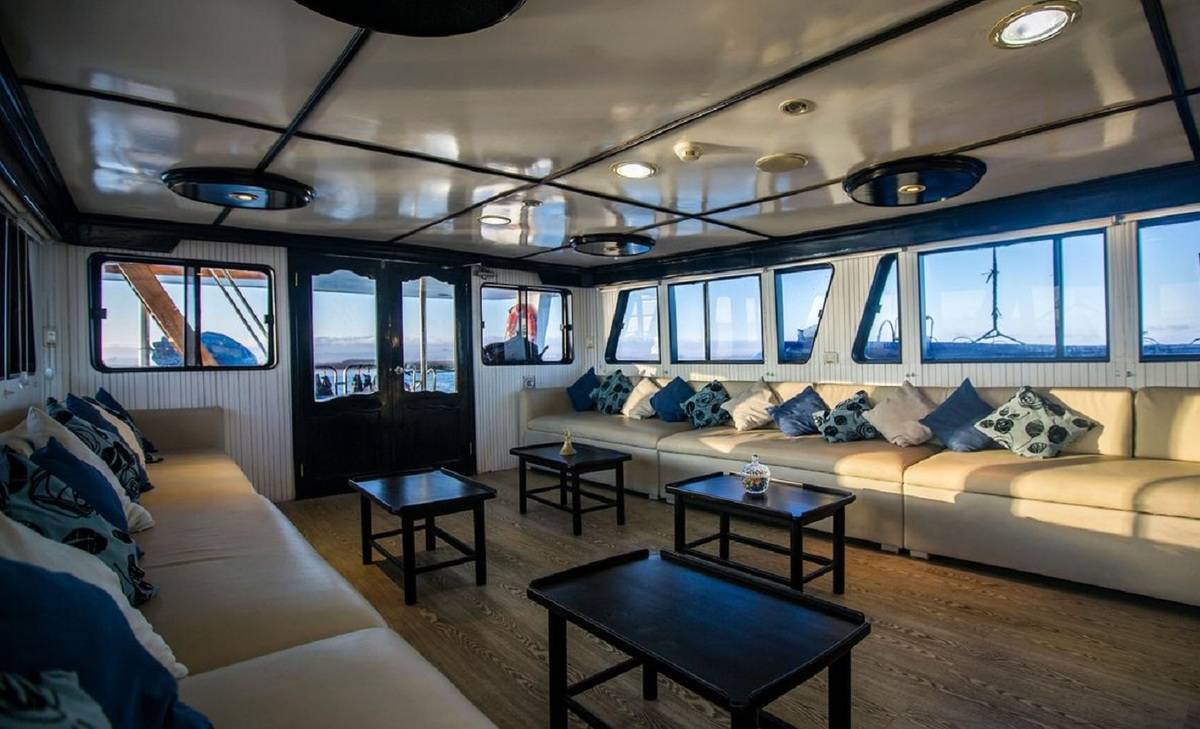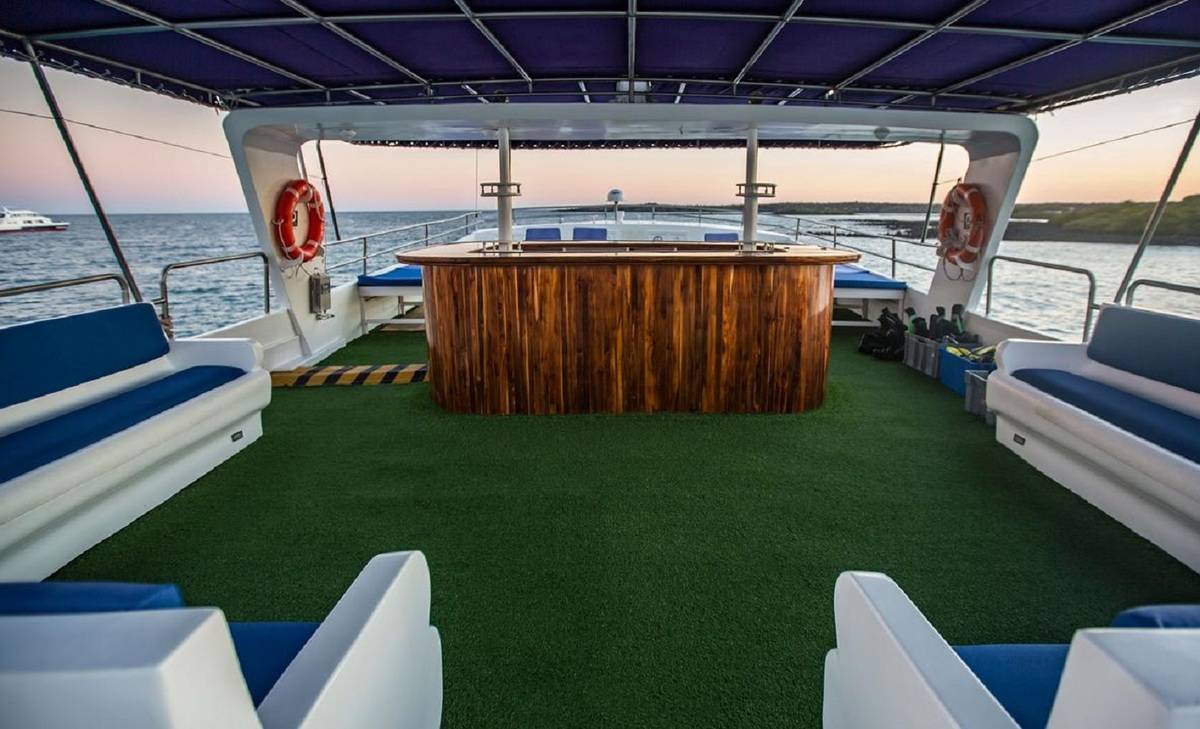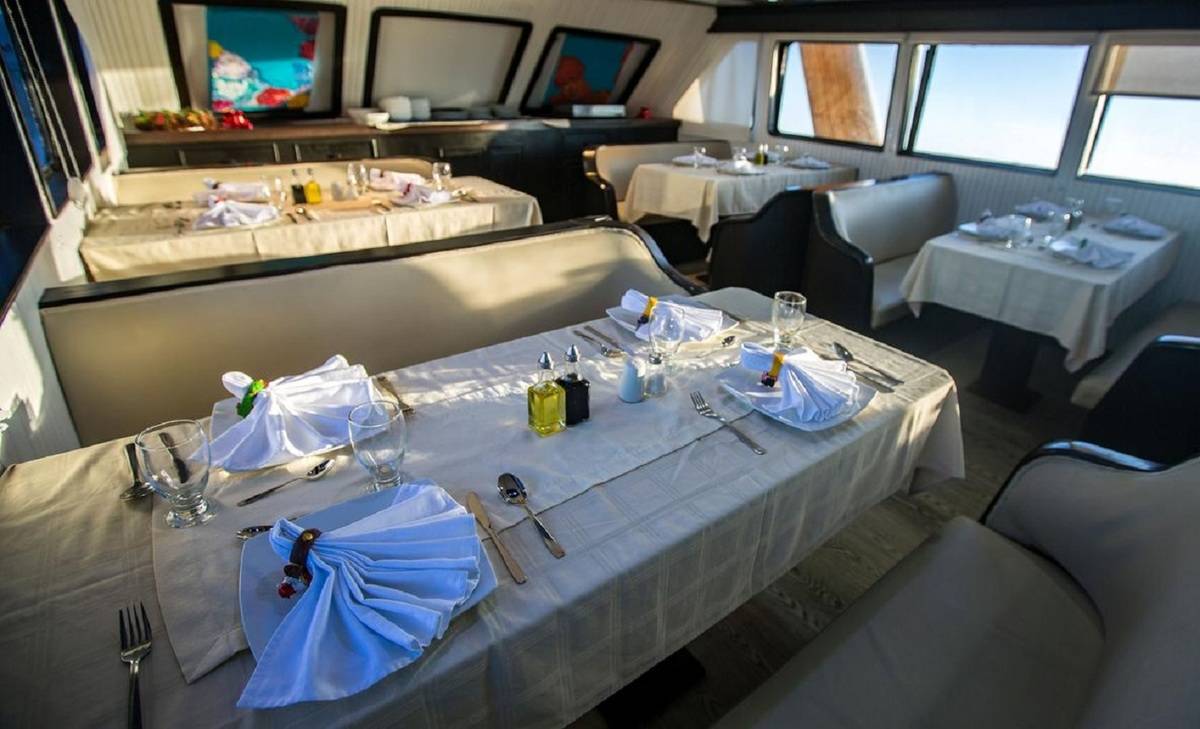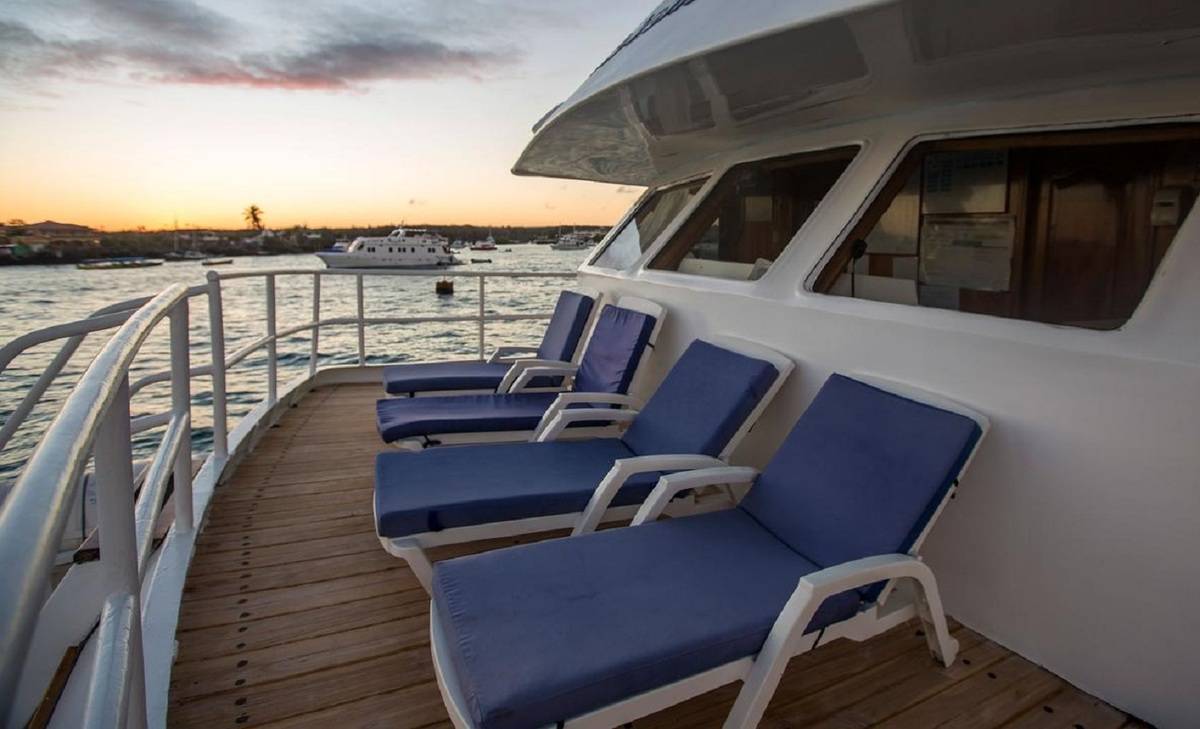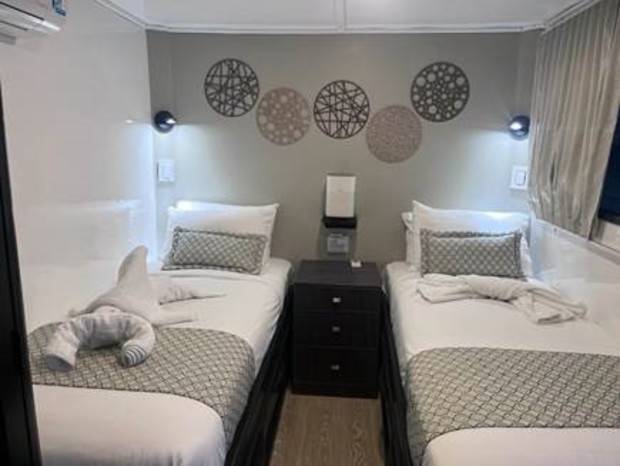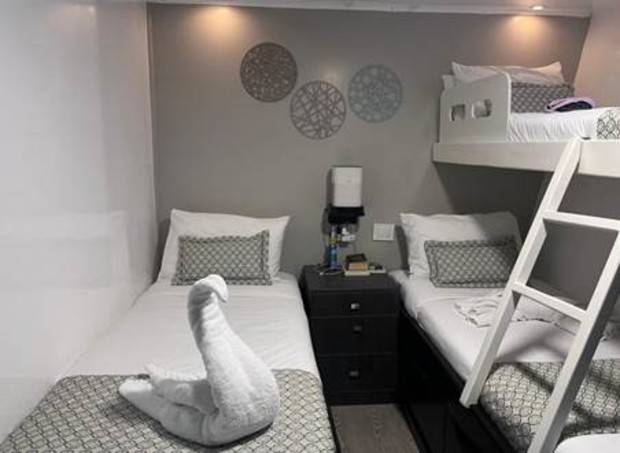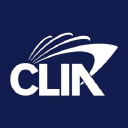Monserrat: Central & Southern Islands
5 Days - Monserrat
Snorkelling with families of sea lions, walking among waved albatross and learning about the famous giant Galapagos tortoise are just some of the activities you can expect to do on this exciting 5-day itinerary aboard the Monserrat.

Home » 5 Day Monserrat: Central & Southern Islands (C)
Itinerary Highlights
- Snorkel among families of sea lions at Isla Lobos
- Learn about the famous giant Galapagos tortoise at the Jacinto Gordillo Breeding Centre
- Wander around Punta Suarez, one of the most wildlife rich spots in the Galapagos
- Wildlife spotting opportunities: flamingos, Galapagos penguin, sea lions, albatross, boobies, sea turtles, rays and much more
Itinerary in Brief
- Day 1: Arrive at San Cristobal & Isla Lobos
- Day 2: Cerro Brujo & Jacinto Gordillo Breeding Centre
- Day 3: Gardner Bay & Suarez Point
- Day 4: Cormorant Point, Champion Islet & Post Office Bay
- Day 5: Charles Darwin Research Station
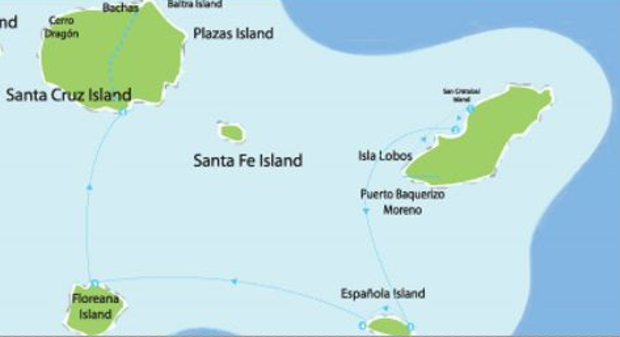
Day 1: San Cristobal Arrival & Lobos Island
Catch an early flight to San Cristóbal Island. In the afternoon, visit Isla Lobos and be greeted by sea lions frolicking in the waves.
Isla Lobos Visit (PM)
Explore this tiny island by foot and boat for some great wildlife encounters. Take a panga ride to view the sea and shore birds nesting and feeding. Spot a small colony of blue-footed boobies as well as two species of sea lions.
Snorkelling (Isla Lobos) (PM)
Snorkel right off the beach at peaceful Isla Lobos, amid the families of sea lions and their inquisitive pups looking to play. Spot nesting frigatebirds and the famous blue-footed boobies resting on the shore. Be sure to bring your camera to catch some snaps at this prime wildlife watching haven.
Day 2: Cerro Brujo & Jacinto Gordillo Breeding Centre
Starting on the north coast of San Cristóbal, land at Cerro Brujo to observe the sea lions, marine iguanas, and seabirds along the beach. Spend the afternoon visiting the tortoise breeding area in the highlands rich with endemic flora.
Cerro Brujo Visit (AM)
Visit Cerro Brujo to explore its coastline, and look for wildlife on the beach, in the water, and in the air. Learn about the human and natural history of the area from the Galápagos CEO. Take a refreshing dip in the turquoise water, and head out on a short walk to a freshwater lagoon – a great place to see flamingos.
Jacinto Gordillo Breeding Center (PM)
Visit the giant tortoise breeding centre and see all of the different species of tortoises up close. See newborns as well as full-grown adult tortoises that can live well over 100 years. Learn how these gentle giants can grow so big!
Day 3: Gardner Bay & Punta Suarez
Enjoy the day on Española Island, one of the oldest in the archipelago. Visit the white sandy beach of Gardner Bay's and the bird colonies of Punta Suárez. Arriving at Gardner Bay's in the morning, spend the day exploring on shore and snorkelling at Gardner Island in the bay. After lunch, sail to the western side of the islands to Punta Suárez, known for its amazing bird colonies and home to the waved albatross (April and December).
Gardner Bay Visit (AM)
Visit Gardner Bay's magnificent white sandy beach, home to sea lions and sea birds. Be sure to explore the beautiful turquoise water and its incredible sea life. Spot young sea lions and large schools of surprisingly big tropical fish, including yellow-tailed surgeonfish, king angelfish, and bump-head parrot fish.
Snorkelling (Gardner Bay) (AM)
Head to Tortuga Rock and Gardner Bay for a spectacular snorkelling experience. Spot playful young sea lions and large schools of tropical fish, including yellow-tailed surgeonfish, king angelfish, and bump-head parrot fish. Look for white-tipped reef sharks napping on the bottom.
Punta Suárez Visit (PM)
Visit Punta Suárez, one of most rich wildlife landing sites in the Galápagos. Be greeted by surfing young sea lions on arrival. Head to the trail to find many species of nesting sea birds, and, if lucky, see the waved albatross. Follow the path up to a cliff for great views over the ocean, and watch sea birds gliding in the wind.
Day 4: Cormorant Point, Champion Islet & Post Office Bay
Land at Punta Cormorant on Floreana. Guided walks to observe the bird and wildlife and learn about the natural history. Snorkelling excursion at Champion Islet. Visit Post Office Bay.
Punta Cormorant Visit (AM)
Visit Punta Cormorant, the only landing site on Floreana Island, and discover two amazingly different beaches: one with green sand, coloured by olivine crystals, and another with white sand particles known as 'Flour Beach'. Spend the afternoon observing flamingos and other shore birds feeding in the lagoon. Spot penguins and marine iguanas at the water’s edge, and explore the lava tubes with the Galápagos CEO.
Snorkelling (Champion Islet) (AM)
Jump on in and get up close and personal with the playful sea lion colony that reside in the waters off this tiny island. Keep an eye out for sea turtles, rays and colourful fish swimming by. There can be currents in this area, this activity should be done by strong swimmers only.
Post Office Bay Visit (PM)
Visit Post Office Bay and learn about its unique history. In the late 18th century, English whaling vessels placed a barrel here to be used as a post office. Today, the box is used mainly by tourists, who may drop off and pick up unstamped letters to be carried to far destinations. Continue the tradition – leave a letter and take one to deliver (be sure it makes it to the correct location)!
Day 5: Charles Darwin Station & Transfer to Baltra Airport
Disembark in Puerto Ayora and visit the Charles Darwin Research Station to see the giant Galápagos tortoises. Fly back to mainland from Baltra airport.
Charles Darwin Research Station Visit (AM)
Visit Fausto Llerena Breeding Center a great place to observe many species of tortoises and land iguanas in captivity. Brought back from the brink of extinction, see the famous Galápagos tortoise up close – a corral houses adult tortoises, and a nursery cares for the young until around age three when their shells have hardened.
This area also houses the Charles Darwin Research Station, a scientific organization initiated in 1964, which works to preserve the Galápagos' ecosystem through the conservation efforts of scientists, researchers, and volunteers. While the offices themselves are not open to visitors, the research station provides a study location for international scientists and environmental education for the local community.
Cabin Details
Upper Deck Twin
2 single beds, air conditioning, private bathroom with shower and hot water & hairdryer.
Lower Deck Twin
2 single beds, air conditioning, private bathroom with shower and hot water & hairdryer.
Lower Deck Triple
1 single bed and 1 bunk bed, air conditioning, private bathroom with shower and hot water & hairdryer.
Monserrat Deckplan
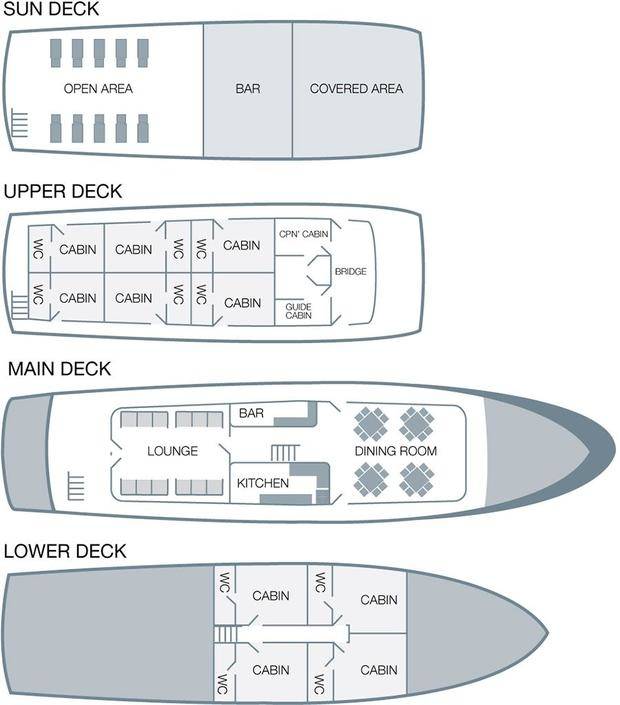
Specifications
- Year Built: 2005
- Year Refurbished: 2016
- Length: 30 metres
- Width: 9.5 metres
- Cruise Speed: 10 knots
- Max speed: 12 knots
- Voltage and Plugs: 110V with North American flat plugs
- Zodiacs: 2
Whats included?
- Cabin accommodation
- Fuel Surcharge
- All meals
- All activities and excursions as depicted in the itineraries in company of a bilingual naturalist guide
- Snorkeling equipment
What’s not included?
- Air ticket to and from Galapagos
- Galapagos National Park entrance fee: USD 100.00 (subject to change)
- Galapagos Control Transit Card: USD 20.00 (subject to change)
- Alcoholic and non – alcoholic beverages
- Wetsuits
- Gratuities to guides and crew
- Personals expenses
- Travel insurance

